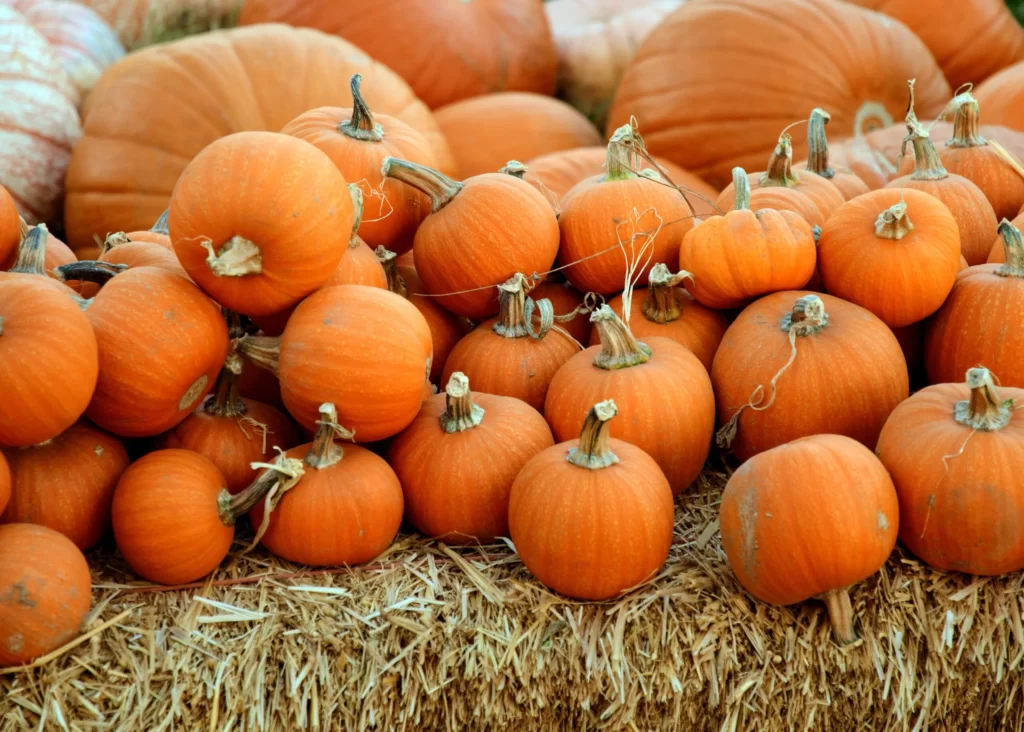
Pumpkin growers in the West are plagued by labour costs
Pumpkin, drought is having a squeezing impact on certain pumpkin growers in the West, especially wholesalers in states like Colorado and New Mexico.
CO, Hudson (AP) —
On a clear day, Alan Mazzotti in northeastern Colorado can see the Rocky Mountains approximately thirty miles west of his pumpkin farm. He was able to confirm the plenty of snow last winter when he and his three boys, together with his wife, glided over newly fallen powder at the well-known Winter Park Resort.
However, a single season of heavier-than-normal snowfall proved insufficient to replenish the diminishing reservoir that he uses to water his pumpkins. This spring, he planted half of his usual crop of pumpkins after learning that his water delivery would be around half that of the previous season. Subsequently, abundant rainfall in May and June resulted in soggy fields, impeding the possibility of many farmers growing further crops. It was just too late for this year by the time it began to pour and the rain began to impact our reservoir supplies and everything else, according to Mazzotti.
This year’s pumpkin harvest served as a reminder of the water shortages facing Southwest and Western agriculture as drought and heat waves are intensified by human-caused climate change, according to several pumpkin producers in places like Texas, New Mexico, and Colorado. Some farmers, like Mazzotti, left some land empty, while others lost 20% or more of their projected crops. Inflation and labour expenses are also reducing profit margins, making it harder for farmers to turn a profit on the produce they sell to pumpkin fields and garden centres.
This year’s parched gourds are a metaphor for the reality that farmers who depend on irrigation have to deal with year after year: they have to make decisions about which acres to plant and which crops they can afford to take a chance on to survive hotter and drier summers, all based on water allotments and the cost of electricity to pump it out of the ground.
A Texas A&M extension agent for Floyd County, which he refers to as the “pumpkin capital” of the state, Mark Carroll said that while pumpkins can withstand hot, dry weather to some extent, this summer’s heat, which broke world records and brought temperatures well over 100 degrees Fahrenheit (38 degrees Celsius) to agricultural fields across the nation, was simply too much.
Carroll remarked, “It’s one of the worst years we’ve had in several years.” In addition to being too hot and dry for irrigation, pumpkins require lower temperatures to be harvested; otherwise, they may begin to deteriorate during transportation and may even fall apart before they reach shops.
According to the Illinois Farm Bureau, Illinois, the nation’s leading producer of pumpkins, had a good crop comparable to the previous two years. However, this year’s Texas harvest season was so hot that farmers were forced to choose between risking harvesting pumpkins at the customary time or waiting to miss the beginning of the fall pumpkin rush. The issue is exacerbated by the fact that irrigation becomes more expensive as groundwater levels decline, forcing some farmers to pay hundreds of dollars in electricity bills each month to pump water.
Growing 950 acres of pumpkins on her farm in North Texas, roughly an hour west of Lubbock, Lindsey Pyle has noticed an increase in the cost of gasoline and seed as well as supplies and pesticides. About 20% of her crop was lost. She continued by saying that initially in the growing season, it might be difficult to forecast the appearance of pumpkins since the vines may appear lush and green, but if they don’t receive enough water, they won’t blossom and bear fruit.
Growing pinto beans and pumpkins in central New Mexico, Steven Ness noted that increased irrigation costs due to diminishing groundwater are a problem that affects all farmers in the area. This can influence the crops that farmers decide to plant since, if maize and pumpkins use roughly the same amount of water, the latter may have a higher yield per acre.
Ultimately, though, “the lack of deep moisture and the aquifer’s water content is our real problem,” according to Ness. That’s an issue that’s probably not going to go away since, in the arid West, climate change is lowering the very rain and snow that recharges aquifers, a process that can take hundreds or thousands of years to complete after misuse.
Three years ago, Jill Graves expanded her blueberry farm to include a pumpkin patch. This year, she said, they had to give up on producing their own pumpkins and purchase them from a wholesaler. Although the pumpkins Graves purchased deteriorated faster than those from previous years, they still turned out better than what little they had grown themselves.
She believes they will try again the following year, though. She stated, “They operated flawlessly for the first two years.” “We had no issues at all.”
For his side, Mazzotti asserts that you “might as well not farm” in the absence of enough water, but he still believes that labour is the more pressing problem. Colorado farmers are accustomed to coping with water restrictions because they have done it for a very long time. But unlike maize, which can be picked by machine, pumpkins need a large number of workers to decide when they are mature, take them off the vine, and get them ready for transportation.
He uses the H-2A programme to employ guest workers, but Colorado recently passed a law requiring overtime pay for farmworkers, something that most other states do not mandate. Due to the difficulty in maintaining competitive rates with locations where labourers receive lower wages, as well as the rising costs of supplies and irrigation, Mazzotti refers to this position as a “no-win.”
